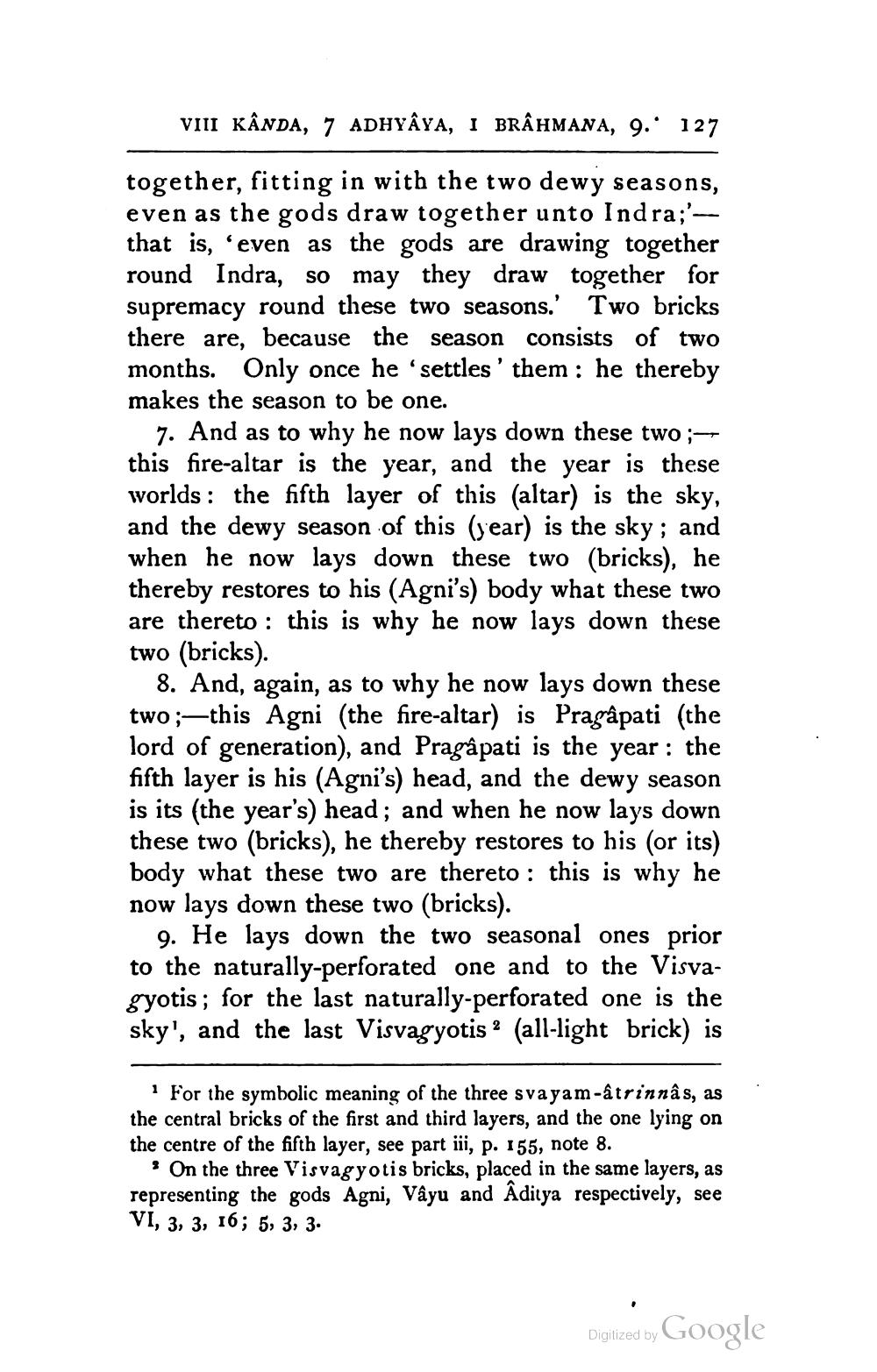________________
VIII KÂNDA, 7 ADHYAYA, I BRÂHMANA, 9. 127
together, fitting in with the two dewy seasons, even as the gods draw together unto Indra;'that is, 'even as the gods are drawing together round Indra, so may they draw together for supremacy round these two seasons.' Two bricks there are, because the season consists of two months. Only once he 'settles' them : he thereby makes the season to be one.
7. And as to why he now lays down these two ;this fire-altar is the year, and the year is these worlds: the fifth layer of this (altar) is the sky, and the dewy season of this (year) is the sky; and when he now lays down these two (bricks), he thereby restores to his (Agni's) body what these two are thereto : this is why he now lays down these two (bricks).
8. And, again, as to why he now lays down these two ;—this Agni (the fire-altar) is Pragâpati (the lord of generation), and Pragâpati is the year : the fifth layer is his (Agni's) head, and the dewy season is its (the year's) head; and when he now lays down these two (bricks), he thereby restores to his (or its) body what these two are thereto : this is why he now lays down these two (bricks).
9. He lays down the two seasonal ones prior to the naturally-perforated one and to the Visvagyotis; for the last naturally-perforated one is the sky', and the last Visvagyotis ? (all-light brick) is
For the symbolic meaning of the three svayam-âtrinnâs, as the central bricks of the first and third layers, and the one lying on the centre of the fifth layer, see part iii, p. 155, note 8.
. On the three Visvagyotis bricks, placed in the same layers, as representing the gods Agni, Vâyu and Aditya respectively, see VI, 3, 3, 16; 5, 3, 3.
Digitized by Google




